
Help! I’ve Encountered The Wrong Balance in My Reconciliation Window
 When you attempt to run a reconciliation report in Quickbooks, do you see the incorrect balance being displayed in the reconciliation window? Conventional wisdom should tell you that you can’t run an effective reconciliation report if the beginning balance is incorrect. This may occur from one of several different reasons. If you entered the wrong balance when creating the account, for example, it will display this balance in the reconciliation window. Alternatively, this problem may occur if you voided, deleted or changed the reconciled transaction. The good news is that you can fix an incorrect balance in the reconciliation window by following just a few simple steps.
When you attempt to run a reconciliation report in Quickbooks, do you see the incorrect balance being displayed in the reconciliation window? Conventional wisdom should tell you that you can’t run an effective reconciliation report if the beginning balance is incorrect. This may occur from one of several different reasons. If you entered the wrong balance when creating the account, for example, it will display this balance in the reconciliation window. Alternatively, this problem may occur if you voided, deleted or changed the reconciled transaction. The good news is that you can fix an incorrect balance in the reconciliation window by following just a few simple steps.
If your reconciliation window shoes a $0 balance, you’ll need to recreate the opening balance. To do this, log in to your Quickbooks account and create a journal entry by accessing Company > Make General Journal Entries. From here, change the date so that it reflects the actual statement date of your account’s beginning balance. For the first field, choose the appropriate account from the drop-down menu. Next, enter the right opening balance in the “Debit” field. For the second field, choose “Opening Balance Equity.” When you are finished, click “Save” to save your changes and complete the process.
You’ll now need to run a mini reconciliation to fix the beginning balance. This is done by accessing Banking > Reconcile. From here, choose the account from the drop-down menu and enter the statement date so that it reflects the journal entry. When finished, click “Continue.” Next, choose the journal entry for the “Deposits and Credits” field,” after which you can click “Reconcile Now” to begin the mini reconciliation. After it finishes, you should see the problematic transaction or transactions that’s causing the wrong beginning balance.
If your reconciliation windows has a positive balance that’s incorrect, you’ll need to run a reconciliation report. This is done by logging in to your Quickbooks account and choosing Reports > Banking > Reconciliation Discrepancy. From here, choose the account from the drop-down menu, after which you should see a list of all transactions that have been modified since the last report that you’ve run. You can then use this list to ensure that it matches your financial records. If you discover a discrepancy, make a note of the problematic transaction so that you can go back and fix it.
Did this tutorial work for you? Let us know in the comments section below!
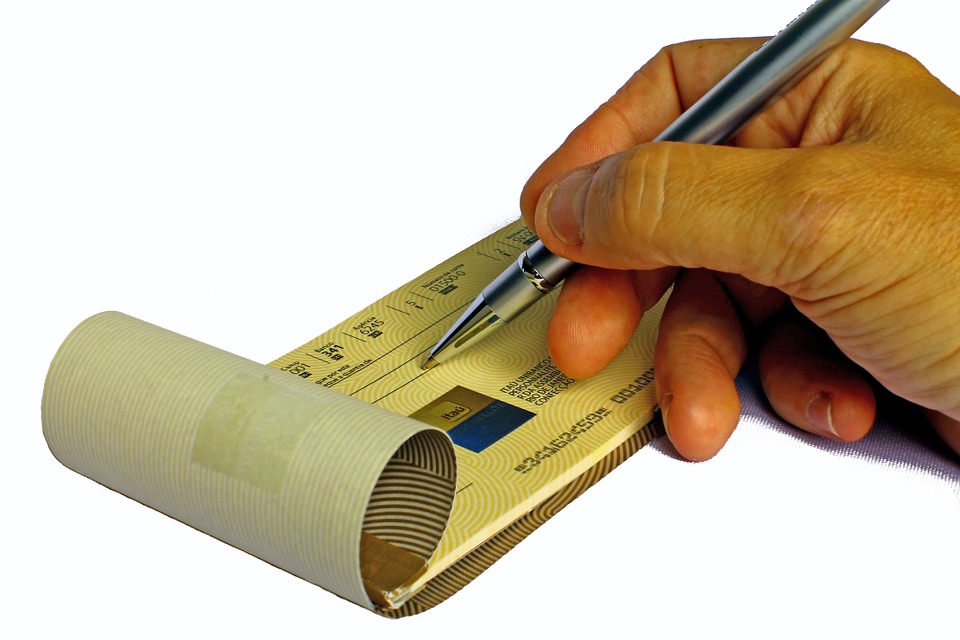
How to Run a Check Detail Report in Quickbooks
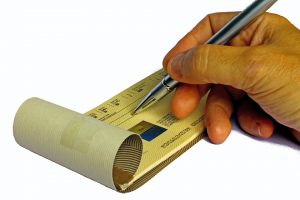 Trying to a run a report in Quickbooks that shows all your printed checks, sorted by number? If you are reading this, I’m assuming the answer is yes. Thankfully, Intuit’s popular business accounting software supports this feature. In just a few easy steps, you can run a Check Detail report that features all your printed checks, sorted by number.
Trying to a run a report in Quickbooks that shows all your printed checks, sorted by number? If you are reading this, I’m assuming the answer is yes. Thankfully, Intuit’s popular business accounting software supports this feature. In just a few easy steps, you can run a Check Detail report that features all your printed checks, sorted by number.
To run a Check Detail report, log in to your Quickbooks account and access Reports > Check Detail report. From here, you’ll have several options to customize the report. While you can choose your own options, for this purpose, it’s recommended that you choose “All Dates” for the transaction date, “Account” for the group by, and “Num” for sort by. These options will allow you to run a Check Detail report that displays all your printed checks, sorted by number. When finished, click “Run Report,” after which Quickbooks will provide you with this report. Like other reports in Quickbooks, you can print this Check Detail report by clicking the printer icon.
But what if the checks listed in your Check Detail report aren’t all sorted by date? Even if you followed the aforementioned steps and choose “Num” for sort by, you may discover that some of your checks aren’t properly sorted this way. Intuit explains that some users may encounter this problem because of the way in which Quickbooks sorts checks. Whether you choose “Num” or any other option for sort by, Quickbooks will still use date as a sorting element. It may be a secondary sorting element, but this can still affect the way in which your checks are sorted in the Check Detail report.
The only solution to this problem is to export your Check Detail report to Microsoft Excel, where you can then modify the entries and sort them by date. To export your report, lick the “Export” button on the report screen, followed by “Export to Excel.” Once the report has been exported, you can open it in Excel to make the necessary changes. The easiest way to sort by date is to select Data > Sort. From here, you can choose sort by. And if you’d like to print your newly updated report, you can do so by clicking File > Print. Congratulations, you’ve just created a custom Check Detail report that shows all your printed checks, sorted by date!
Did this tutorial work for you? Let us know in the comments section below!

The 5 Primary Types of Adjusting Journal Entries in Accounting
 Creating adjusting journal entries is an important step in accrual accounting. They are called “adjusting” journal entries because they are made before you generate your actual financial reports, thereby giving you a better understanding of your business’s true financial health. In this blog post, we’re going to cover the five most common types of adjusting journal entries and what they mean.
Creating adjusting journal entries is an important step in accrual accounting. They are called “adjusting” journal entries because they are made before you generate your actual financial reports, thereby giving you a better understanding of your business’s true financial health. In this blog post, we’re going to cover the five most common types of adjusting journal entries and what they mean.
#1) Deferred Expenses
Deferred expenses are business-related expenses that you’ve already paid for but haven’t received. Whether it’s a product or service, if you pay for something related to your business’s operations and haven’t received it yet, it’s classified as a deferred expense, in which case it should be added as an adjusting journal entry.
#2) Accrued Expenses
Another common type of adjusting journal entry is accrued expenses. While deferred expenses refer to products and services that you’ve already paid for and haven’t received, accrued expenses are the opposite: they are expenses that you haven’t paid for but plan to. If you have a business loan, for example, an upcoming interest payment on the loan is an accrued expense.
#3) Deferred Revenue
There’s also deferred revenue, which is income generated by your business that you haven’t yet fulfilled. If a customer pays for a product or service in advance, you may record this payment as deferred revenue until you deliver the product or complete the service. Once you’ve fulfilled your obligation — either by delivering the product or completing the service — it’s no longer considered deferred revenue.
#4) Non-Cash Transactions
Non-cash transactions are financial transactions made by your business that don’t have any impact on your business’s cash. Some business owners non-cash transactions are simply transactions made using credit cards, debit cards or checks, but this isn’t true. They are actually financial transactions, such as equipment depreciation, that don’t affect your business’s cash.
#5) Accrued Revenue
Finally, accrued revenue is any income that your business has earned but haven’t received payment for. It’s not uncommon for businesses to allow their customers to pay after the product has been delivered or service has been completed. The business sends the customer an invoice, indicating how much he or she must pay and by when. Until the customer pays this invoice, however, the transaction should be recorded as an accrued revenue adjusting journal entry.
Have anything else you’d like to add? Let us know in the comments section below!

How to Record Bank Fees in Quickbooks
 Have you been hit with a bank fee? It’s no secret that banks charge a heft amount for overdrafts, late payments on loans, and other fees. In fact, it’s not uncommon for customers to incur $39 for each of these fees. When this occurs, however, you should record the fee in your Quickbooks account. The fee is technically an expense, so you should record it appropriately in your Quickbooks account. Failure to do so may result in the fee throwing off your business’s books. So, what’s the right way to record bank fees in Quickbooks?
Have you been hit with a bank fee? It’s no secret that banks charge a heft amount for overdrafts, late payments on loans, and other fees. In fact, it’s not uncommon for customers to incur $39 for each of these fees. When this occurs, however, you should record the fee in your Quickbooks account. The fee is technically an expense, so you should record it appropriately in your Quickbooks account. Failure to do so may result in the fee throwing off your business’s books. So, what’s the right way to record bank fees in Quickbooks?
To begin, log in to your Quickbooks account and click the “File” menu at the top of the page, followed by “Open or Restore Company.” As you may already know, this will allow you to open your company file. You’ll need to navigate to the location of your Quickbooks company file. Whether it’s located on the cloud or locally on your computer, find and select your company file, after which you should click “Open.”
Next, you should see your Quickbooks company file opened. Go to the “Banking” menu, click it, and choose “Use Register” from the main menu. You can then scroll to the bottom of the check register, where you can click an empty area on a blank transaction. Next, click any area of the date field to enter your own date. It’s important that you choose the date on which you incurred the bank fee. If you don’t remember when you were hit with this fee, go back over your bank records. This typically won’t have an effect on the overall outcome of the fee, but it’s still a good idea to record bank fees using their appropriate date.
Under the “Payment” column, enter the total amount for the fee that you were charged by the bank. There are a few more steps in the process, however. Under the “Account” drop-down menu, you’ll need to choose “Bank Service Charges.” This tells Quickbooks that the charge came from a bank and not a vendor or customer. When you are finished, you can then click “Record” to finish the process. Congratulations, you’ve just recorded a bank fee in Quickbooks! Hopefully, it rarely or never happens, but when you incur any additional bank fees in the future, follow these steps to record them in Quickbooks.
Did this tutorial work for you? Let us know in the comments section below!

What Does ‘Closing Books’ Mean in Quickbooks?
 Quickbooks has become the preferred accounting software for business owners everywhere. Whether you operate a small-, medium- or large-sized business, you can’t go wrong with Quickbooks. It’s user-friendly interface, combined with constant updates and unparalleled customer support, simplifies the otherwise complicated and time-consuming task of recording your business’s financial transactions. However, it’s important that you familiarize yourself with “closing books” when using Quickbooks.
Quickbooks has become the preferred accounting software for business owners everywhere. Whether you operate a small-, medium- or large-sized business, you can’t go wrong with Quickbooks. It’s user-friendly interface, combined with constant updates and unparalleled customer support, simplifies the otherwise complicated and time-consuming task of recording your business’s financial transactions. However, it’s important that you familiarize yourself with “closing books” when using Quickbooks.
As most professional accountants know, “closing books” refers to the process of locking a particular time period so that new entries can no longer be added and existing entries can no longer be modified. When a new year rolls around, for example, you may want to close your books on the previous year. Assuming you’ve received payment for all outstanding invoices, you can close this year to ensure that neither you nor anyone else changes the entries.
The good news is that Quickbooks Desktop — the desktop version of Intuit’s popular business accounting software — makes automatic adjustments at the end of the year so that you don’t have to manually close your books. Known as year-end adjustments, they are created automatically using the start month of your fiscal year. So, how does it work? Basically, Quickbooks will automatically adjust your reported income and expense accounts so that they cancel each year, thereby allowing you to start the new year with a zero net income.
For December 31st of the previous year, Quickbooks will make closing entries to transfer the balance of your income and expense accounts to your retained earnings. Ideally, this should result in a zero net income while transferring your actual fiscal year’s net income to retained earnings.
But what if you want to review all changes that Quickbooks has made to your books? Thankfully, you can by following just a few simple steps. To see all changes made to your financial transactions, either on or before the closing date, log in to your Quickbooks account and click Reports > Accountant & Taxes > Closing Data Exception Report. Under “Closing date history,” you’ll see a list of all closing dates and the respective user who set them.
As a business owner, it’s important that you close your books at the end of a fiscal period. Neglecting to do so could result in accidental changes being made to your financial records, which can throw off your records come tax time.
Have anything else that you’d like to add? Let us know in the comments section below!
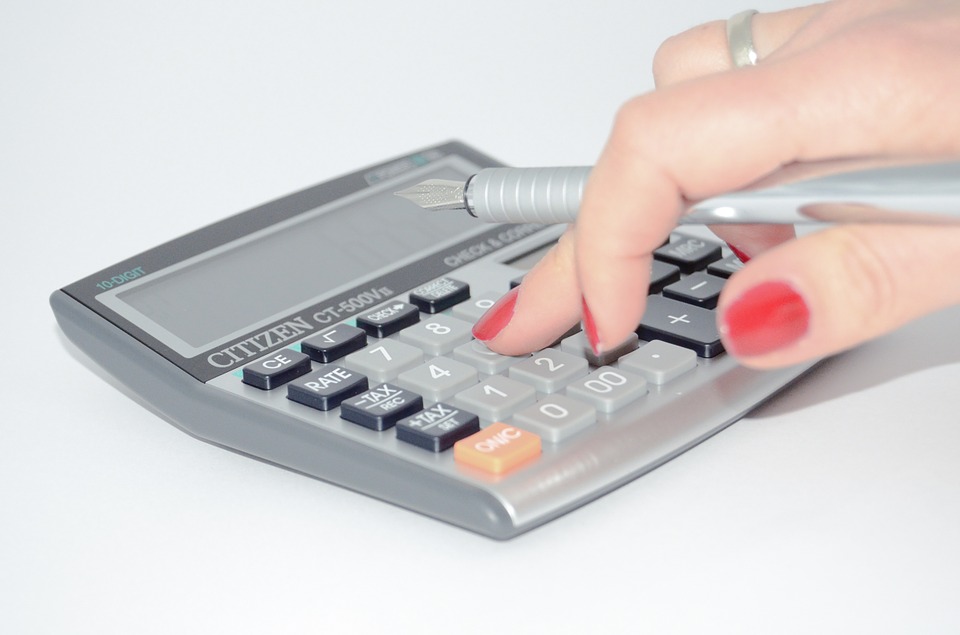
The Beginner’s Guide to Recording Expenses in Quickbooks
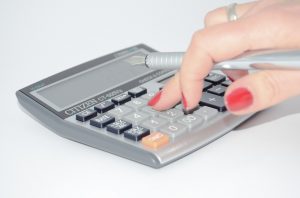 As a business owner, you’ll need to record all business-related purchases for tax purposes. If you purchase a product or service that’s used to help facilitate your own business, you can typically deduct it from your taxes. To take advantage of this deduction, though, you must keep excellent financial records of all business-related expenses. Thankfully, Quickbooks makes recording such expenses a breeze. Even if you’ve never used Intuit’s popular accounting software, you should have little or no problem recording expenses.
As a business owner, you’ll need to record all business-related purchases for tax purposes. If you purchase a product or service that’s used to help facilitate your own business, you can typically deduct it from your taxes. To take advantage of this deduction, though, you must keep excellent financial records of all business-related expenses. Thankfully, Quickbooks makes recording such expenses a breeze. Even if you’ve never used Intuit’s popular accounting software, you should have little or no problem recording expenses.
To record expenses in Quickbooks, log in to your account and click the “+” button at the top of the main menu, followed by “Expense.” From here, you’ll be able to select the vendor or user to whom you are making the payment. In the upper-right corner of the menu, click the drop-down button and select the payee’s name. If you don’t see the vendor listed here, you’ll need to add them to your account. Once added, you can go back and select the vendor as the payee.
Next, click the drop-down menu next to the “Balance” field. This will allow you to specify the account from which the expense was made (e.g. checking, savings, credit card, etc.). It’s important to note that you won’t see debit card listed as an option. Rather, if you want to record an expense that was made using a debit card, you must choose checking account. Checking accounts are handled in the same way as debit cards, meaning there’s no need to use a separate “debit” account. You can use “checking” for purchases made using your checking account or debit card associated with the respective bank account.
Under the “Payment date” field, enter the date on which the purchase was made. And next to the field, you’ll see an option for “payment method,” which you should click to select the method of payment used for the purchase.
Finally, you’ll have the option of choosing a category for the expense. This is done by clicking the drop-down menu under “Account” and next to “Description.” Quickbooks has dozens of different categories, ranging from advertising and automobile to disposal fees and dues and subscriptions. Choose the category that’s most relevant to the purchase. This won’t affect the outcome of the expense record, but it’s still useful for reference purposes later. When finished, click “Save” to save your changes and complete the process.
Did this tutorial work for you? Let us know in the comments section below!
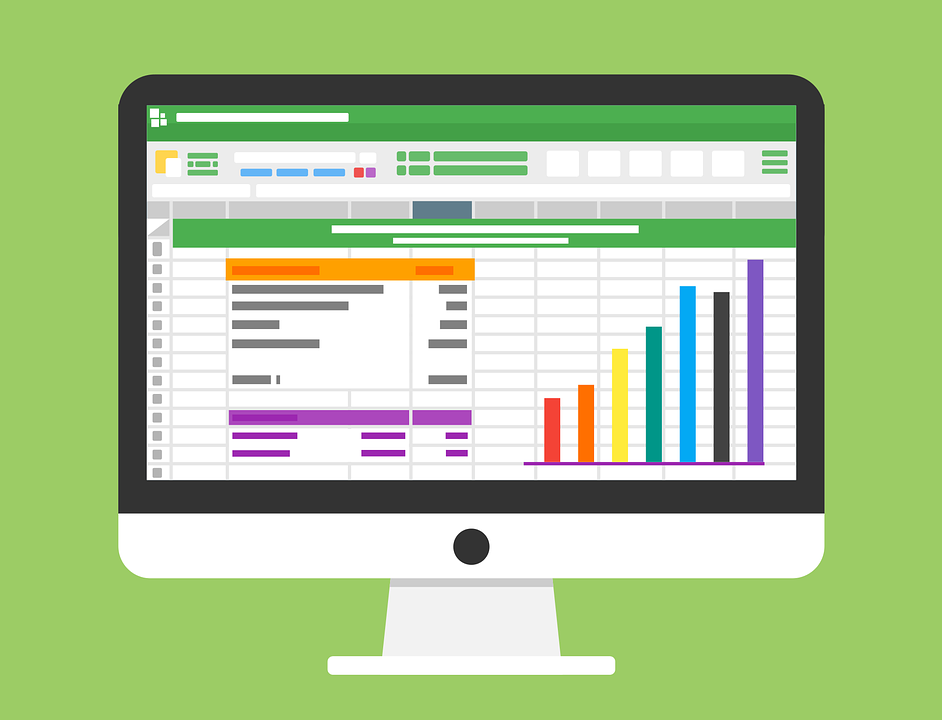
How to Change Account Type in Quickbooks
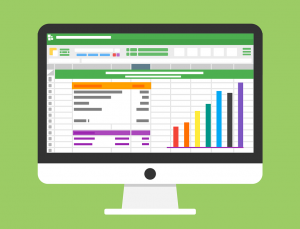 Are you trying to change the type of account for a group in your Chart of Accounts? Assuming you use the Quickbooks accounting software, your parent accounts and their respective sub-accounts must have the same account type. You cannot have a parent account of one type with a sub-account of a different types. However, you can still change the type of account for the entire group — both the parent account and its sub-accounts — by following a few simple steps.
Are you trying to change the type of account for a group in your Chart of Accounts? Assuming you use the Quickbooks accounting software, your parent accounts and their respective sub-accounts must have the same account type. You cannot have a parent account of one type with a sub-account of a different types. However, you can still change the type of account for the entire group — both the parent account and its sub-accounts — by following a few simple steps.
To change the type of account for a group in your Chart of Accounts, log in to your Quickbooks account and click the gear icon at the top of the page, followed by “Chart of Accounts.” Next, select the sub-account associated with the group that you want to change the account type, after which you should click “Edit” to change its properties. You should now see an “Account” screen, where you can click the “Is sub-account” field to uncheck the box. Next, click the “Category Type” menu to change the account type. From here, you can select the account detail, after which you’ll see a warning message indicating that it will affect your reports. After confirming the process, click “Save” to save the changes and complete the process. You will then need to repeat these steps for all sub-accounts and the parent account associated with the group that you want to change.
Of course, you can create new sub-accounts under this new account type by following a similar process. Click the gear icon, followed by “Chart of Accounts.” Next, click the sub-account, followed by “Edit.” When you see the “Account screen,” click the “Is sub-account” box to create a checkmark in it. For the drop-down menu titled “Parent account,” click to select the parent account. When finished, click “Save” to save your changes and complete the process.
Ideally, you should use the right account type when initially setting up accounts in Quickbooks. As most business owners and accountants know, though, this isn’t always possible. Circumstances may arise that result in the wrong account type being used. The good news is that you can easily change the account type in Quickbooks. As revealed here, it’s a quick and easy process that requires just a simple steps. Just remember to use the same account type for both the parent account as well as all sub-accounts tied to it.
Did this tutorial work for you? Let us know in the comments section below!

How to Set Up a Recurring Payment in Quickbooks
 Does your business make regular, fixed payments to a vendor? If so, you should consider setting up recurring payments in Quickbooks. While you can always make these payments manually, recurring payments automates this process so that you can focus your time and attention elsewhere. Using the Quickbooks accounting software, you can easily set up recurring payments to one or more vendors. For a step-by-step walkthrough on how to set up recurring payments, keep reading.
Does your business make regular, fixed payments to a vendor? If so, you should consider setting up recurring payments in Quickbooks. While you can always make these payments manually, recurring payments automates this process so that you can focus your time and attention elsewhere. Using the Quickbooks accounting software, you can easily set up recurring payments to one or more vendors. For a step-by-step walkthrough on how to set up recurring payments, keep reading.
First and foremost, you’ll need to access one of the payments that you’ve already made to the vendor. There are several ways to do this, one of which is involves accessing the Register. From the Register, click the “Use Register” button under the “Banking” menu, at which point you’ll see a list of all bank accounts that you’ve connected to Quickbooks. Choose the bank account from which you made the payment to the vendor. Next, locate and double-click the payment that you made to the vendor. This will open the payment, allowing you to set it up as a recurring payment.
From the payment window, click “Edit,” followed by “Memorize Check.” Quickbooks will then ask you to select a reminder option. For the “How Often” field, enter the frequency of which you want to make this payment. You can select from monthly, weekly, bi-weekly or custom frequencies. For the “Next Date” field, enter the date on which you want to make the next payment. For the “Number Remaining” field, enter the number of days (in advance) that you want Quickbooks to record the payment. To post the payment on your preferred day, enter “0” in this field. When finished, click “OK” so that Quickbooks will memorize the transaction and return you to the “Write Checks” menu.
Assuming you followed these steps, you should receive a reminder from Quickbooks to create the payment or print the payment when the next due date rolls around. There’s no rule stating that you must use recurring payments when purchasing goods or services from vendors. In fact, many business owners ignore this process and, instead, make manual payments to vendors. But if you make the same payment to the same vendor every month, setting up recurring payments is a smart way to facilitate this process. Once set up, Quickbooks will automatically pay the vendor according to your preferences.
Did this tutorial work for you? Let us know in the comments section below!

5 Ways to Improve Your Business Credit
 Regardless of what your business does or sells, you’ll probably need capital to fund its operations. While some business owners use their own personal money for business-related expenses, most seek loans or lines of credit from a lender. But if you’re thinking about applying for a loan or line of credit, you should focus on improving your business credit. Without good credit, you’ll struggle to get approved. So, consider the five following tips to improve your business credit.
Regardless of what your business does or sells, you’ll probably need capital to fund its operations. While some business owners use their own personal money for business-related expenses, most seek loans or lines of credit from a lender. But if you’re thinking about applying for a loan or line of credit, you should focus on improving your business credit. Without good credit, you’ll struggle to get approved. So, consider the five following tips to improve your business credit.
#1) Check Credit With 3 Major Bureaus
First and foremost, you should check your business credit with the thee major reporting bureaus: Dun & Bradstreet, Equifax and Experian. These are three most commonly used bureaus for business credit. Go to each of their respective websites and create an account for your business to view your business credit. If you see any false information listed, file a dispute to have it removed.
#2) Use Credit to Pay for Expenses
Don’t use your business’s checking account to pay for business-related expenses. Rather, use a line of credit. Like personal credit, your business credit will grow the more you use it. If you use your business’s checking account, on the other hand, it won’t offer any benefit to your business credit. Always use credit to further build your credit.
#3) Pay on Time
Of course, it’s important that you pay your pills on time, every time. Some business owners neglect to pay their bills on time, believing they’ll incur nothing more than a late fee. While most lenders and creditors charge fees for late payments, they may also report these late payments to the three aforementioned credit bureaus, thereby hurting your business credit. If you can’t pay a bill on time, contact the creditor or lender to see if they’ll allow an extended grace period.
#4) Keep Balances Low
Try to keep your credit balances as low as possible. You want to have low revolving credit with high limits, as this indicates to other creditors and lenders that you pay your bills. Rather than paying the minimum amount due, make larger payments to keep balances low.
#5) Don’t Close Credit Accounts
Finally, avoid closing your credit accounts. Even if you rarely or ever use them, keeping them open will strengthen your business credit. When you close a credit account, other creditors and lenders will see that you have less open credit, which could hurt your efforts to get approved for a new credit account.

How to Delete a Sales Receipt From a Deposit in Quickbooks
 Are you struggling to delete a sales receipt from a deposit in your Quickbooks account? Well, you aren’t alone. Any payment or sales receipt that’s connected to a deposit can’t be edited in Quickbooks. You can, however, delete it and add it back. This is the recommended solution for editing a sales receipt that’s deposited. For a step-by-step walkthrough on how to delete a sales receipt from a deposit in Quickbooks, keep reading.
Are you struggling to delete a sales receipt from a deposit in your Quickbooks account? Well, you aren’t alone. Any payment or sales receipt that’s connected to a deposit can’t be edited in Quickbooks. You can, however, delete it and add it back. This is the recommended solution for editing a sales receipt that’s deposited. For a step-by-step walkthrough on how to delete a sales receipt from a deposit in Quickbooks, keep reading.
To get started, log in to your Quickbooks account and click the gear icon at the top of the page, followed by “Chart of Accounts/Account and Settings.” Next, click “View Register/Account History” for the number associated with the account. You’ll then see a list of all transactions tied to that account. Scroll through this list of transactions until you find the transaction with the incorrect sales receipt. You can then click “deposit” in the register, followed by “Edit” to open the transaction. If done correctly, Quickbooks will bring up the “Deposits” menu.
You aren’t out of the woods just yet, as there are a few additional steps required to delete a sales receipt from a deposit. You’ll need to click the incorrect sales receipt so that it removes the check mark next to it. This will also delete the payment from the deposit. When finished, click “Save,” after which Quickbooks will ask you to confirm the process, in which case you can click “Yes.”
Following these steps will allow you to delete a sales receipt from a deposit. But what if you want to edit the payment? To edit the balance of the payment, click on it from the main screen, at which point you’ll see the “Deposits” menu open. You can then click on the unchecked payment to see the “Sales receipt” menu. From here, you can edit the total of the payment, followed by clicking “Save” to finish the process. Like before, though, Quickbooks will prompt you to confirm the process. Assuming everything looks good, click “Yes” to the message.
Finally, you’ll need to replace the payment by clicking the box next to the “Payment” column of the payment that you recently edited. When finished, click “Save” and then “Yes” to the message asking you to confirm the process. Following these steps will allow you to delete a sales receipt from a deposit or edit the payment on a sales receipt.
Did this tutorial work for you? Let us know in the comments section below!
